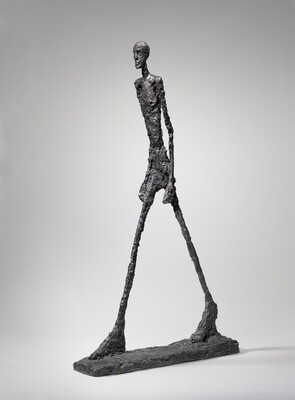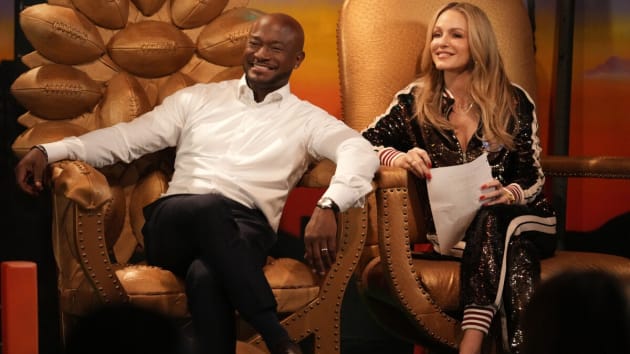No one would ever define them that way, but poems are little sculptures, are they not? Words chipped off and white space punched into them until the look matches the textual intent. The National Gallery of Art perhaps agrees with me, having invited some big guns of the poetry world to respond to pieces of its artwork in a project you can view at their website as part of the “Poetry is a Country” festival. (There will be a symposium on September 23, for the D.C. locals.)
U.S. poet laureate Ada Limón is on the roster, as is 2021 Macarthur Fellow Hanif Abdurraqib, Ojibwe poet Heid E. Erdrich, Victoria Chang, Naomi Shihab Nye, Teri Ellen Cross Davis, Jorie Graham, and Jason Reynolds. If you’re an Edouard Vuillard fan or a Max Beckman buff, you will enjoy!
The standout for this particular observer was Ukrainian-American poet Ilya Kaminsky’s response to Walking Man II, a bronze sculpture—a soul “unbandaged” and well-punched bus ticket—made by Swiss artist Alberto Giacometti (1901-1966). What a nice complement the poem makes! I now want to lay down in the gallery and ponder our short and sharp existence.
Have a peek at Kaminsky’s contribution to the project here:
Alberto Giacometti, Walking Man II, 1960, bronze, Gift of Enid A. Haupt, 1977.47.7
A Walking Man
Ilya Kaminsky
“Giacometti is not working for his contemporaries, nor for the future generations: he is creating statues to delight the dead.” –Jean Genet
Perhaps you too, upon seeing Giacometti’s “Walking Man,”
will run from the National Gallery of Art hollering
into the Potomac, will strip
off your shirt—
as you splash, the gulls will
toss your pants back and forth
making a game
of what cannot
be eaten.
Perhaps you too have an enormous, impolite need to drink with the long-legged statue, but no
beverages are allowed in the gallery & even Giacometti’s
“Walking Man” is afraid of the guard & wishes
him bird droppings in his hair.
Between the flashes of tourist cameras, I
see it: Giacometti’s “Walking Man” is
a political
declaration—
A public lecture
on how people’s
souls are unbandaged and how
we will die of them.
The air is raw with joy.
Sit, heart, rest
from the soul’s south-west
Why so much life?
I don’t know what to do with less!
I have given up all I have
to the giver of bread and breath.
Outside, Washington DC
is a theater where police vans play the role of police vans
and senators pretend to be senators
a taxi makes a city more a city
and boys still don’t read except for what is written on women’s t-shirts.
At 10 am, the gallery opens and you zigzag between
our nation’s most important people parading between important
paintings. Someone’s
camera flashes—
a politician
hurries by as if he were
Giacometti’s “Walking Man”
but he looks more like a well punched
bus ticket.
Why so much life?
I don’t know what to do with less
I have given up all I have.
When I die,
find me at the National Gallery of Art
I’ll be flat on the floor
in front of Giacometti’s “Walking Man”
a little flask of lemon vodka in my pocket
I want the last joy of putting my cheek
to the stone floor
of whispering
you in whom I do not believe, hello.
























































